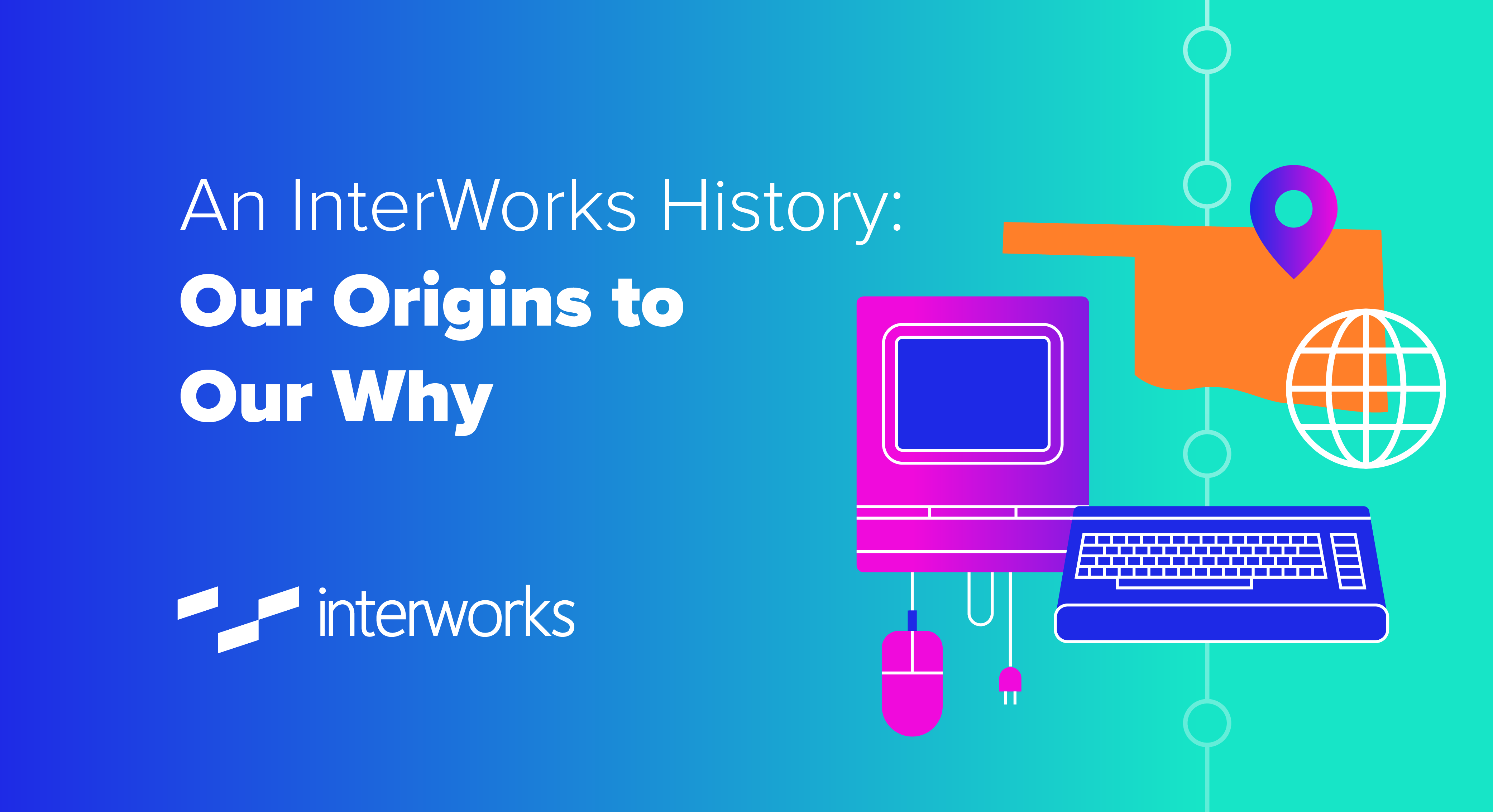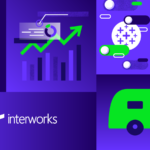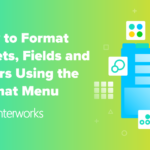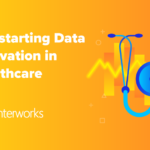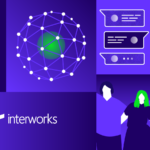When you start your own company, the concept of “having made it” is one that rarely sinks in – no matter how objectively successful you become (whatever that means). I don’t doubt that there’s a part of my mind that views InterWorks in the exact same way as when it started – a part of me that still views us as a chippy upstart taking on the world. I do feel confident that, over the years, we’ve stayed true to our roots and the values we set out with back in 1996. Still, that was 25 years ago – a quarter of a century – and some things have inevitably changed. Most noticeably, what started out as just me doing local networking services in Stillwater, Oklahoma, has since grown into a global data consultancy made up of over 230 unique and talented individuals.
Maybe it’s because we’ve reached a certain size, or perhaps it’s because 25 years feels like a worthy milestone, but it struck me recently that we’ve never consolidated the InterWorks story in one publicly viewable place. Sure, we’ve shared our history orally with clients or in brief presentation format during things like new employee onboarding, but we haven’t etched it into any stone tablets that I know of. In truth, it’s likely impossible to capture the whole story because every story can be told from different perspectives. Someone who has been at InterWorks for 15 years might have a pretty different take from someone who has been here for three years. You get the idea. What I’m trying to say is that I feel it’s time to tell a more crystallized version of the InterWorks story, and I’ll start with my own perspective.
A Long Time Ago, in a Flyover State …
Before I dive into “how” InterWorks came to be, I feel it’s much more important to share “why” InterWorks came to be. It’s not that the “how” doesn’t matter – I just think you learn a lot more about an organization or an individual by understanding what motivates them. To get a clear picture of how I view InterWorks’ “why,” you need to understand a little bit about my upbringing in the college town of Stillwater, Oklahoma. The first thing you need to know about me is that I fell in love with technology at a very early age. I like things that turn on and off. I like things with blinky lights. My first tangible memory of diving into tech on my own was in second grade. I pushed really hard to get a computer: a Commodore Vic-20.

My family didn’t have a lot of money growing up, so it was really big deal to get this thing. I wanted it because I wanted to play video games. Today, you would just hop into the App Store or download Steam. Back then, it wasn’t so easy. In fact, the easiest way was to program your own games. So, my dad bought me this book called “Zap! Pow! Boom!” Each chapter in the book was made up of coding instructions for a single game. As a second grader, I didn’t really know how to type, so I transposed the code one finger at a time. The code was written in BASIC, and at the end of the first chapter, you type in the word “Run.” I hit enter, and what I got back was “Error Line 1.” So, I had to go all the way back to the beginning and see what I transposed incorrectly. By the time I got to the end of the book, I had accidentally learned how to code in BASIC. For me, it was all about playing video games, but now all of a sudden, I understood the fundamentals of programming.
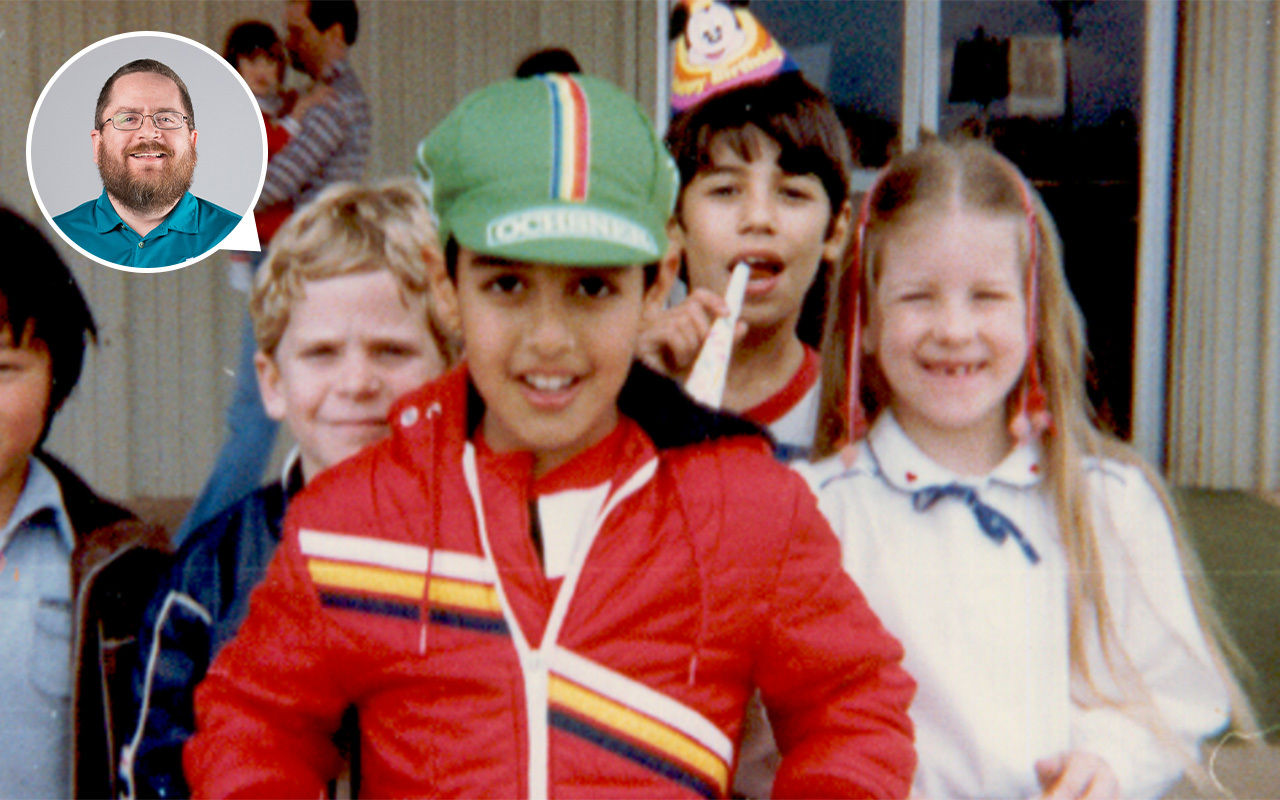
Above: Me and some childhood friends, one of whom is Richard Clapp, Systems Engineer
As time went on, computers were rapidly advancing. I wanted something new, so I started looking at a 286 model. Today if you want a computer, you go to Dell.com, Best Buy or the Apple Store. Back then, you went to your local computer store, told them your budget and then waited anywhere between five days to two weeks for it to be built. You could save a few hundred dollars by ordering parts and building it yourself if you knew how. So, that’s what I did. Using the earnings from my paper route and some extra funds from my parents, I ended up saving enough money to buy parts and build the computer myself. This experience ended up teaching me a lot about how to put a computer together. I learned about motherboards, RAM, ribbon cables, processor speed and so on.
Though I didn’t know it then, somewhere along the way, I realized building that computer taught me another skillset. I now had a programming-light background, as well as a newly found hardware-light background. It wasn’t just me developing these skills and interfacing with new technology, though. My dad, brother, aunt and uncle – everyone was into tech. I would get a lot of their hand-me-downs.
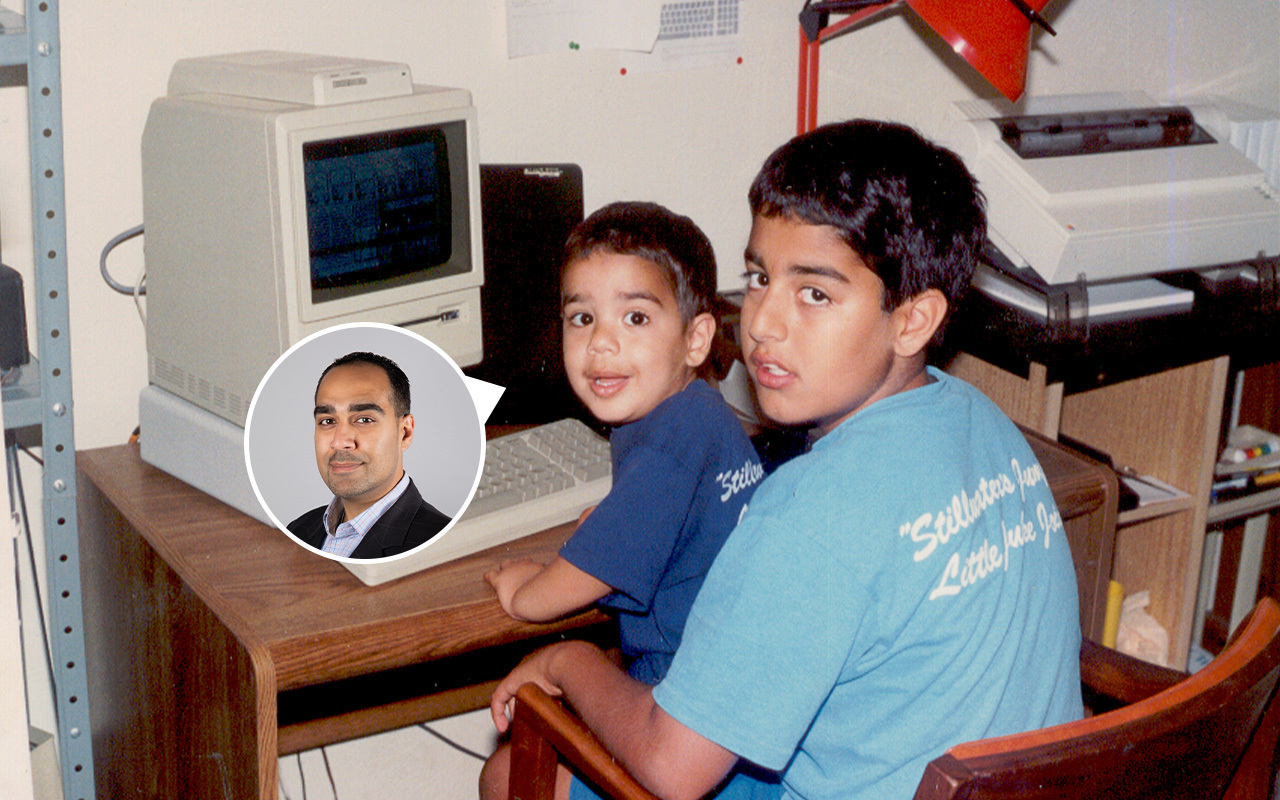
Above: Me and my younger brother, Ideen Jahanshahi, Solutions Architect
Co-Op Gaming, Corporate Tech and Coming of Age
Fast-forward to my high school graduation, and that’s when a game called “Doom” came out. The significance of this game was that it was one of the first games you could play with someone else. If you were on the same network as them, or if you had a modem, you could call into your buddy’s modem and play against one another. Now, all of a sudden, all my friends wanted computers with this game installed on it. They also wanted help installing modems and calling into other people’s modems. Because I had a reputation as a “computer person,” I became the tech support for my buddies so we could play this game together. What I realized throughout all of that is that I really enjoyed helping other people solve these problems.
This coincided nicely with another big moment upon my graduation of high school. Creative Labs, who was at that time the biggest multimedia peripherals manufacturer on the planet, had just announced they were going to open their U.S. support center in Stillwater. This was a massive, publicly traded company. In my mind, it was the equivalent of Google or Tesla coming to town today. I absolutely wanted to work there. Because they were based in Singapore and were not yet physically in Stillwater, I did a remote interview, and they offered me a job as part of the first group hired in Stillwater. It wasn’t until the first day of onboarding when I showed up in person that they realized I was 17. Because they had a strict 18-and-older employment policy, they told me to come back in a year, so I did.
When I first started at Creative Labs, I loved it. They were a small company with big technology, and everyone there was incredibly passionate. Our little group would have regular LAN parties and BBQs on the weekend. Even though it was only an $8-an-hour job, which was still pretty great for a college kid, I loved it and took it very seriously. I’d go home and read entire manuals, which is not something I do – I was just that into it. I remember that no one ever told us what our mission was when we started there, so we made up our own. My mission was to delight the customer. There really weren’t any rules, so we just did whatever we could to keep the person on the other end of the line happy.
This philosophy came with a lot of rewards. Customers would often send me gifts. One gift I remember well was from a guy who worked for a massive networking company called 3Com who sent me a box of network cards, each worth $135. I thought that was pretty cool at the time and still do today. After a year-and-a-half of working at Creative Labs, I went from loving my job to being completely miserable. The reason why was because Creative Labs started suffocating employees with KPIs and metrics for everything, as well as increasingly strict rules. This choked all the fun out of work for me.
So, what happened that caused such a dramatic change? I think a big factor was that they experienced such an incredible period of growth over such a short time that their onboarding classes grew to 20-40 people in size. Rather than focusing on hiring the most talented people, they focused on hiring anyone who could speak English well and type at least 30 words per minute. If those boxes were checked, you were in and they’d train you the rest of the way. I’m not saying there’s anything wrong with that approach, but the quality of new hires suffered as a consequence, leading them to introduce a lot of new rules that boxed everyone in.
Essentially, we now had four-hour shifts broken up by 15-minute breaks for things like using the bathroom, smoking, grabbing a snack or whatever. Each phone call was limited to 10 minutes. At the 10-minute mark, you escalated your call to a manager. When you hung up the phone, you had 60 seconds to type up notes in the wrap-up period before your next call. Then we started getting scripts for everything. Again, there’s nothing wrong with that, it was just a fundamental change from the freedom and energy I had when I first started there. Ultimately, I ended up leaving. That was my first exposure to the “tech world.”

The Summer of InterWorks
After Creative Labs, I ended up moving to an apartment complex behind Eskimo Joe’s (a popular sports bar) in Stillwater with some buddies. We moved here in the middle of the summer, mainly because it had a pool. We thought we’d be social butterflies, but instead I bought a spool of network cable, took those network cards I got from the appreciative customer I mentioned earlier, walked down the hall of the apartment complex, knocked on people’s doors and asked them to be on our network. If they said yes, we ran cable up the side of the building, stapled it to the wall and ran it into their room. We then put a network card in their computer and added them to our LAN. Keep in mind that this was before high-speed internet and Wi-Fi. As a result of all this, I spent most of my weekends and weekdays providing support for friends and parents with network issues.
Playing games was fun, but I really enjoyed building up networks and then tearing them down – figuring out why things weren’t working, why drivers were off, how to crimp network wiring, how to make it look good and so on. It was a lot of fun, but after a while, I realized I was fixing the same 10-20 problems over and over again. I knew the only way I could tackle more challenging problems was if I did this for businesses. So, in 1996, as a sophomore at OSU, I went and incorporated InterWorks. Like many tech companies, I started InterWorks out of a garage – well, it was technically out of my room that was converted from a garage.
A quick aside, in case you were wondering where the name InterWorks came from: It’s a combination of the word “networks” – because that’s the work we provided – and “internet”– because we knew at the time the internet was going to be a big deal. The name was brainstormed by a collection of roommates and friends who lived in the same house.
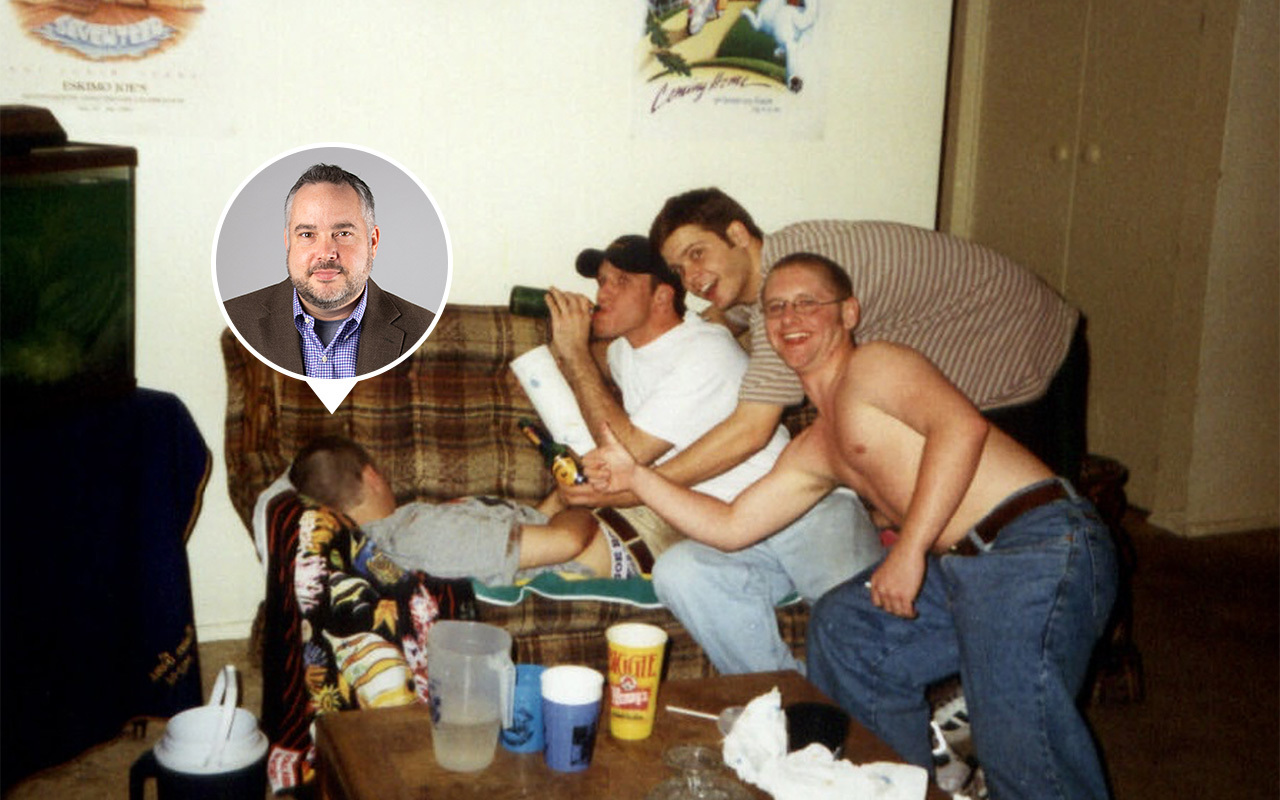
Above: The InterWorks house, featuring Blaine Stephens, Strategic Account Manager
I never started InterWorks with the vision of starting a business or being an entrepreneur. To me, it was just a way to further the fun. The first thing I did after incorporating was go to local computer companies in town and offer some services. I said, “Hey, you’re in the business of building computers. I would like to service those computers for your business customers. If I do a great job, not only will they be happier with what you sold them, but they will also come back to you asking for more of it.” I was very lucky, because these local computer companies simply wanted to build computers and had no interest in servicing them, so they readily agreed. If you look at our model then and our model today, it’s exactly the same. Back then, the partnership was with local computer companies. Today, it’s with billion-dollar, multinational companies like Dell, Tableau and Snowflake.
Before long, InterWorks started receiving more work, and our big break came in 1997 when we got a call from Clinton Public Schools to bring internet to their school. Lots of schools at the time were getting funding to have their buildings retrofitted to support internet. Clinton Public Schools wanted us to take care of the entire thing, and we said “Absolutely.” We had never done anything of that scope or magnitude, so I called a bunch of buddies and asked if they were interested in helping out. They said yes and were glad for the cash. So, we loaded up a few cars with all the tools we thought we’d need, as well as several ladders and 18,000 feet of network cable.
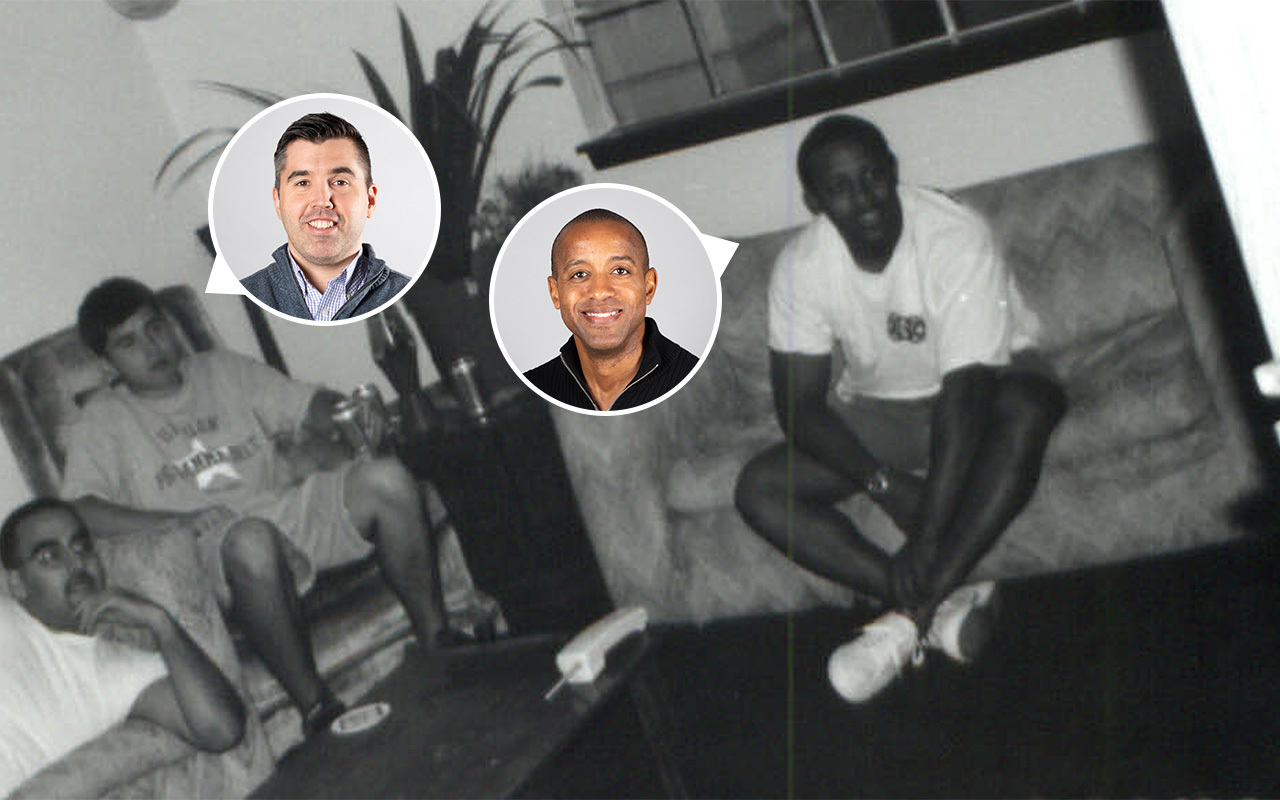
Above: Early days with APAC Regional Director Robert Curtis (left) and COO Johnnie Hurns (right)
We drove to Clinton, Oklahoma, which was a few hours away, in the dead of summer. If you’ve been in a public school during summer, you know that they turn the AC off to save costs. In Oklahoma, that means 100+ degree weather. When running cable, you have to move around ceiling tiles, causing white flakes, pink fiberglass insulation and who knows what else to rain down on your head. When you stick your head above the ceiling, it’s another 20 degrees hotter up there.
So, we were in a school out of town, working in 120+ degree conditions, with no real idea of what we were doing at a scope we had never tackled before. As you might expect, we ran into some unique problems – problems like how to scale 30ft walls and run cable across them. The longer we did this, the more we figured out that there are more efficient ways to do things. We started bundling cables and being smarter about where we ran them – for the most part. There were some really long hallway runs where I’m sure we broke fire code by running cable over ceiling lights.
On top of all the challenges with the work, we had no real concept of how to bill expenses or account for costs. So, we got the cheapest hotel we could find – the kind of hotel where you don’t touch anything you don’t have to. We packed five us into one room, but the one nice surprise was that the hotel had a hot tub. One buddy surprised us all with a $30 bottle of champagne to celebrate our job well done. No one brought swimsuits, so we sat around in that hot tub in our tighty whities, passing around the bottle and just taking in the moment. We were having fun and thought the work was cool. At the end of the project, we posed for some silly pictures.
I look back on those days often. We were working 16-hour days in smoking-hot weather, unsure if we were even going to finish the project. But we did it somehow, and we brought high-speed internet to a part of the world that had not seen it before. We gave this entire K-12 school internet that would, in theory, change their lives for the better. It felt great. If I could go back to those days and do it again, I would in a second.
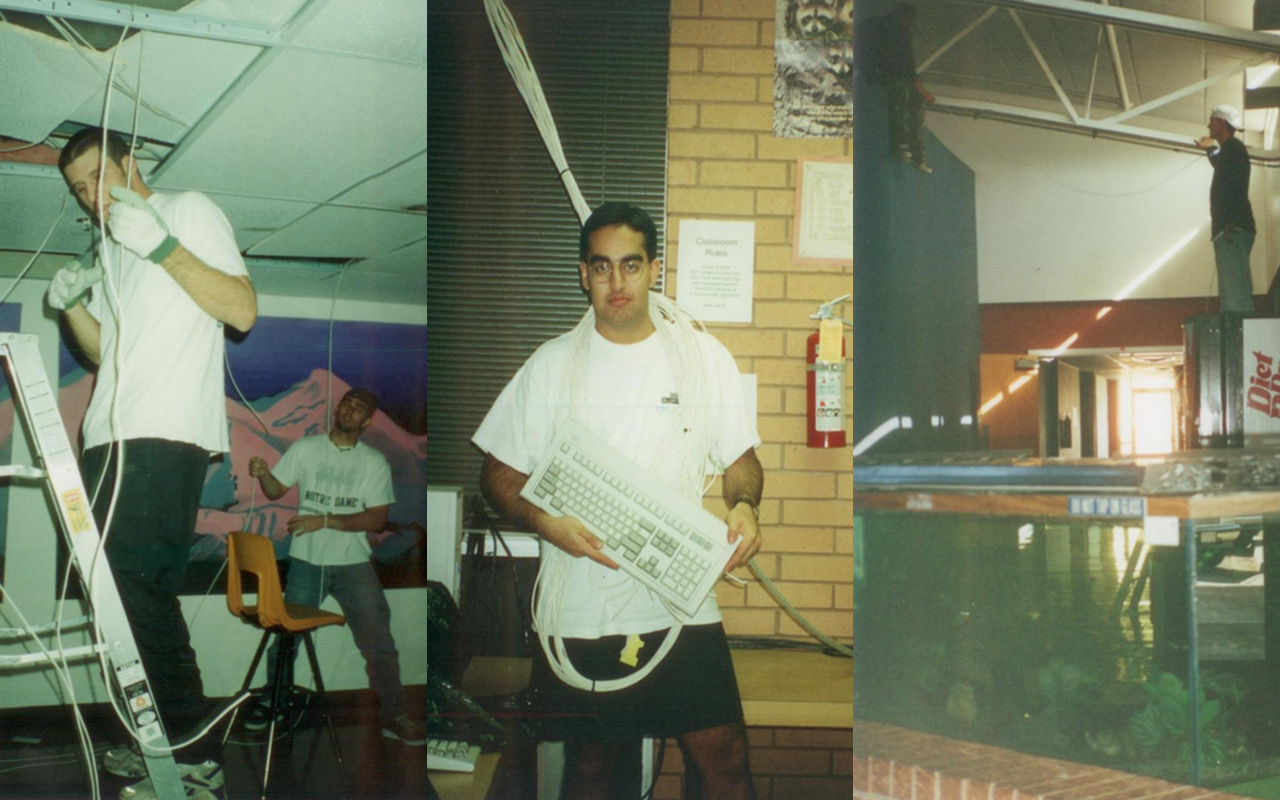
Above: Snapshots from our first big job at Clinton Public Schools in 1997
InterWorks Goes Full-Time
After the Clinton Public Schools job, I was still finishing my bachelor’s degree and trying to figure what I wanted to do. I was interviewing with companies like IBM and Boeing (who was doing an International Space Station project that I wanted to be a part of). Me and my buddies would sit around and talk about what the future might look like. I decided to stick with school and get my master’s degree. Somewhere along the way in 1997 – the second year of InterWorks – I started dating this gal, Staci Bejcek. One day, I was showing her how I invoiced different customers, explaining to her how I used Word templates to print out two copies of each invoice. I’d send one copy to the customers and then keep the other for my records. I’d wait for the customer to pay and then move that copy from the “unpaid” folder to the “paid” folder. I remember her looking at me like I was an idiot. One month later, QuickBooks was installed on my computer, and she had transposed everything from paper to digital format. She is our global CFO today.
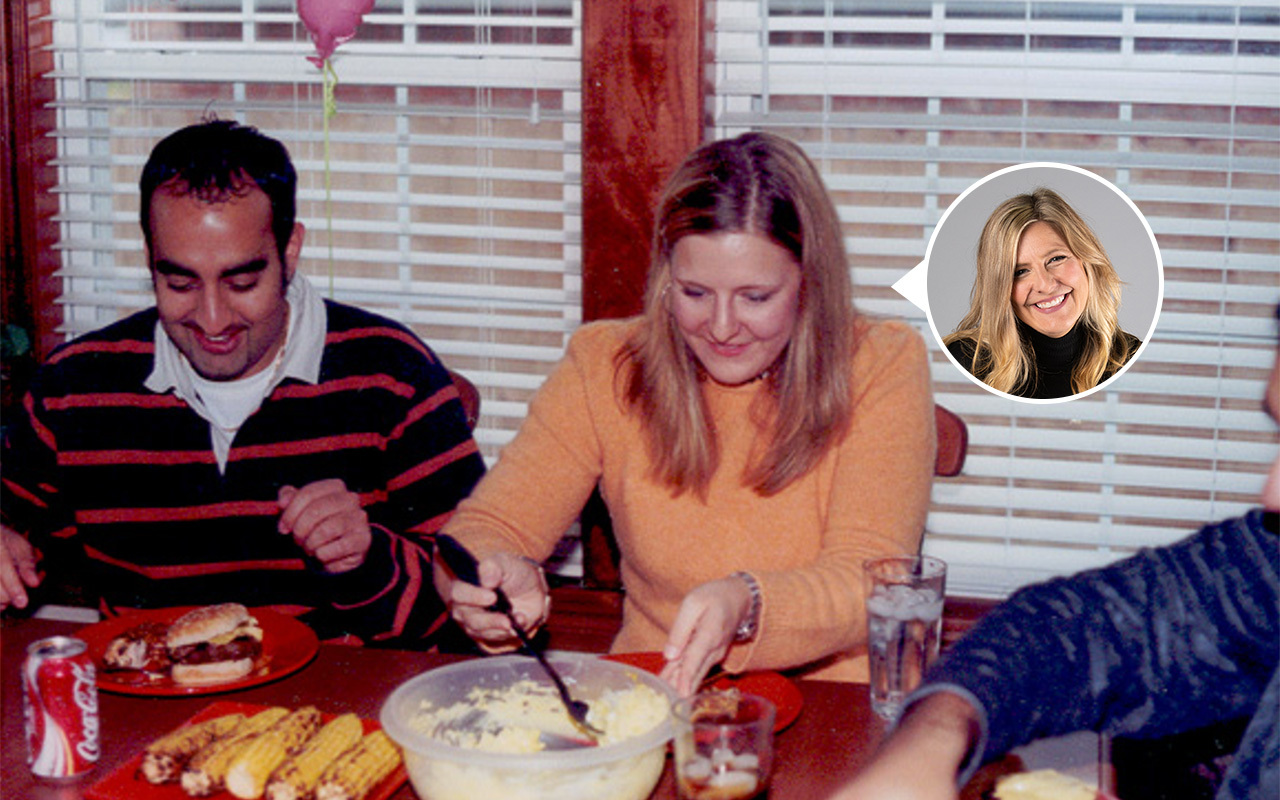
Above: My wife and CFO, Staci Bejcek, without whom InterWorks wouldn’t exist
When 2000 rolled around, I graduated with a master’s degree from OSU. The question then was what was I going to do with my life? I started thinking that maybe this InterWorks side business could be my real job. I had never really thought of it that way, but the idea stuck. The rest is history. It’s probably unfair to skip everything that’s happened between 2000, when InterWorks took off as my full-time job, and now. A lot has happened since then, and a lot of wonderful people have shaped InterWorks’ trajectory. We expanded our IT services, became a Dell partner, became a Tableau partner, became a truly full-stack data company, expanded across the globe, and now we employ over 200 people who do incredibly cool work for organizations of all sizes and backgrounds. It’s been a wild ride, and I don’t know that I ever could have imagined being where we are now 25 years ago. It’s better.
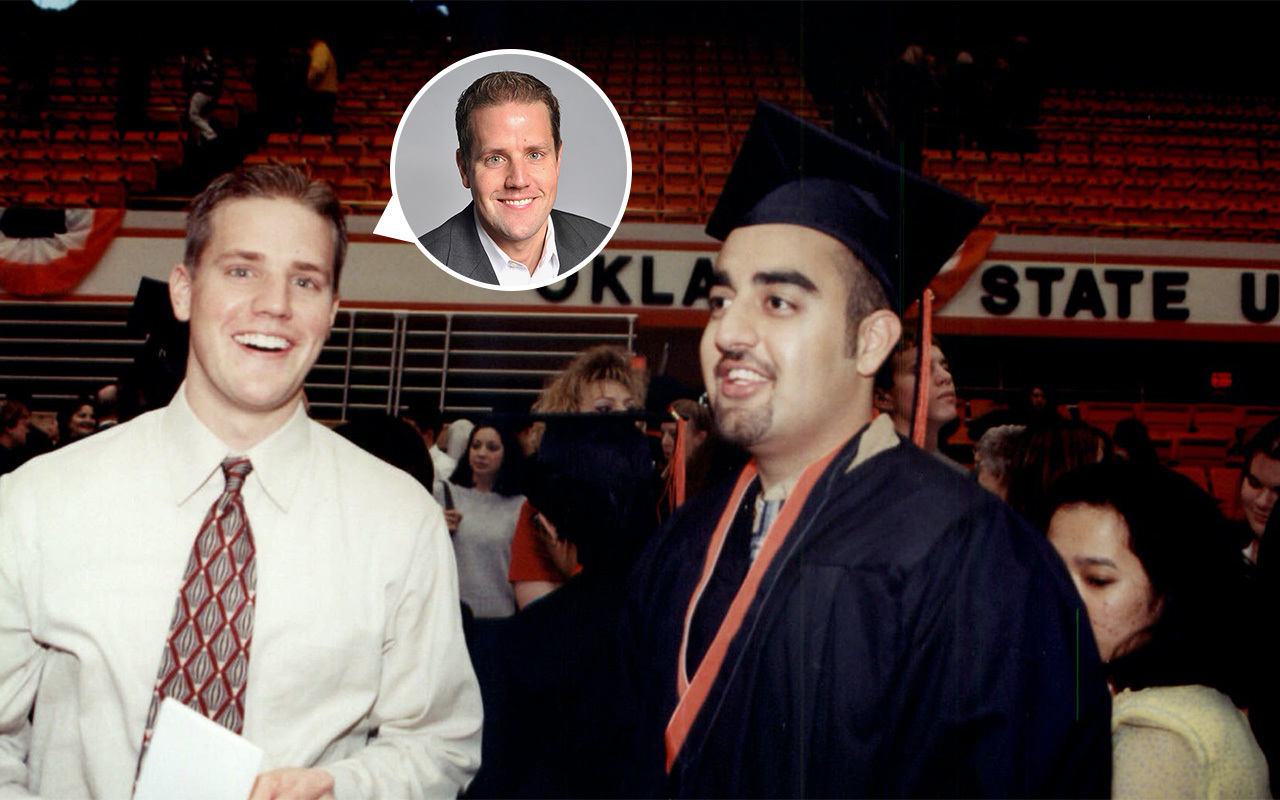 |
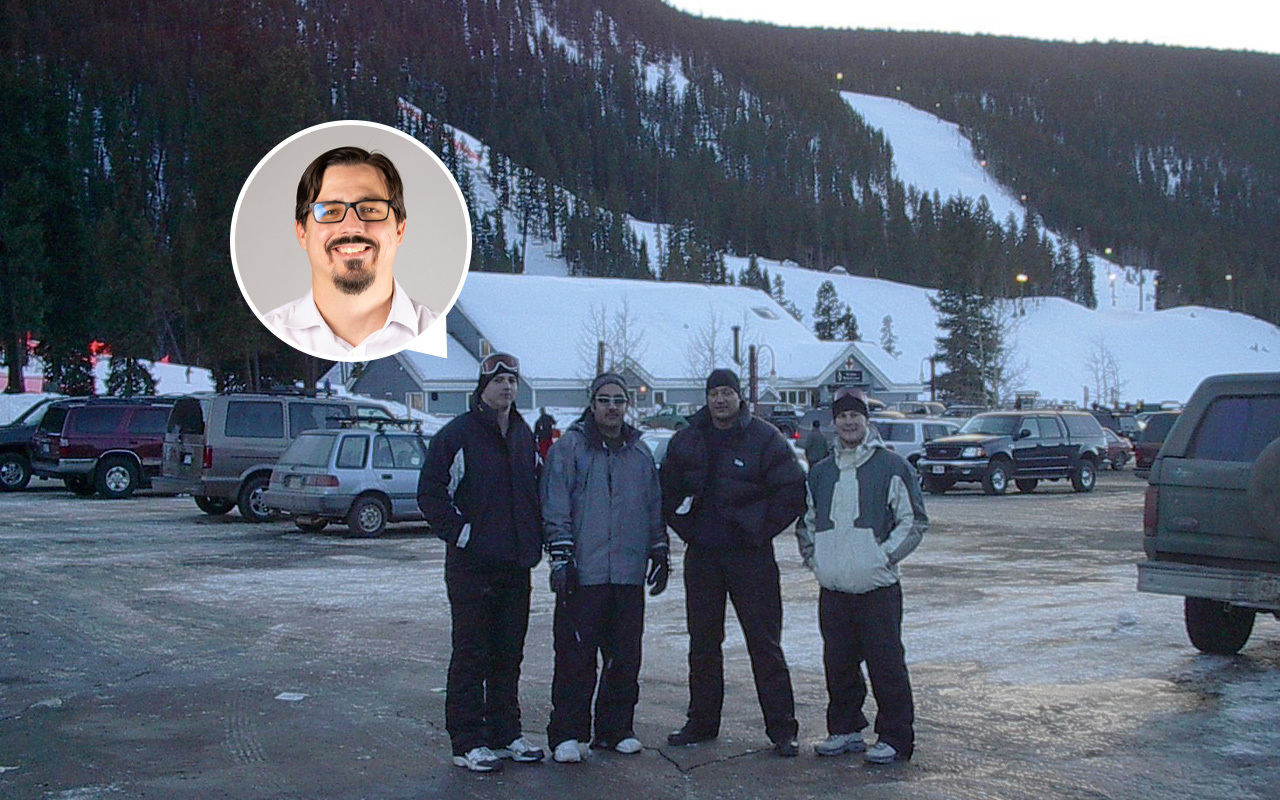 |
Above: Global Director of Business Development Aaron Confer (left) and CDO Cole Shelton (right)
The InterWorks Why
In the early days, people would ask me, “What are you trying to do with InterWorks?” I’d say, “I’m just here to have fun.” The problem there is that everyone loves that idea, but when they would prod further to ask what our mission was, my answer didn’t change: having fun was all that really mattered. Of course, the need for more specifics arose. For a long time, we would go do work we loved and that clients enjoyed, which would lead to opportunity after opportunity. That went okay for a while, but when we reached a critical mass, we realized we needed to put some guardrails on our work, or else we would just grow and grow into infinity and potentially risk becoming Creative Labs with all of their rules. I never wanted that, so we got more deliberate about defining our mission. After years of conversation, we managed to distill it into this phrase:
“Do the best work, for the best clients, with the best people.”

If those three conditions are true, then I am happy with what we’re doing and where we’re at as a company. People love to ask where I want to be in three or five years, and the truth is that the where doesn’t matter so long as we’re staying true to this mantra. For me, the goal isn’t about attaching ourselves to specific technology, growing to a certain size, meeting arbitrary growth or revenue targets or anything like that – it’s about keeping everything in balance with that mantra. If you want to learn more about that mantra, as well as some additional InterWorks history, go check out this companion blog post.
We're Hiring!
We’re always looking for the right people, and we could be your perfect fit.
Join The Team